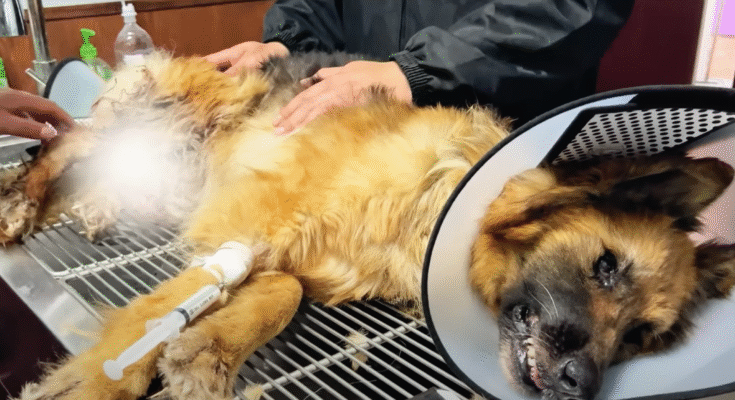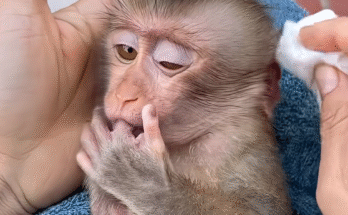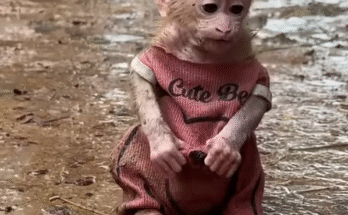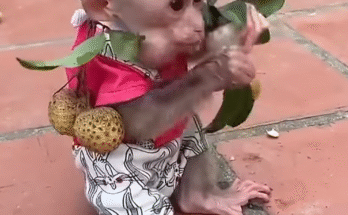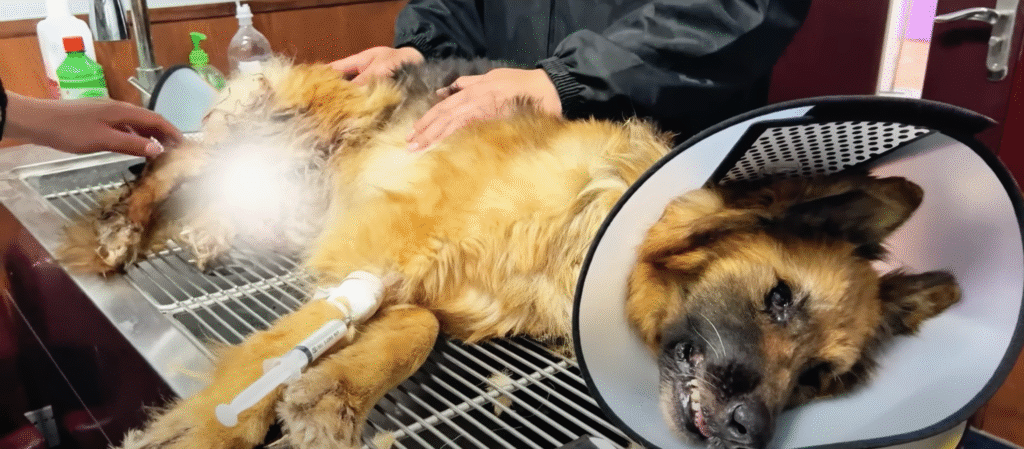
The moment I stepped into the yard, I could feel the weight of years pressing down like a tangible force. The smell hit me first: stale air mixed with unwashed fur, dirt, and something far darker—the lingering scent of neglect. In the far corner, huddled under the remains of a makeshift shelter, sat the dog. He was old, far older than anyone could have guessed, his once-strong frame now frail, his coat patchy and dull. His eyes, however, were the most striking—clouded with age, yes, but also with a lifetime of distrust, fear, and suffering.
The owner had called, vaguely mentioning that the dog “was sick” and needed care. What I found was far worse than I imagined. The dog had been confined to a small, concrete pen for nine long years. Nine years of near-total isolation, chained or fenced into a corner of the yard, with no real human contact, no warmth, no comfort—just the harsh reality of survival. His illness was obvious: labored breathing, weak limbs, and patches of fur lost to untreated infections and skin conditions.
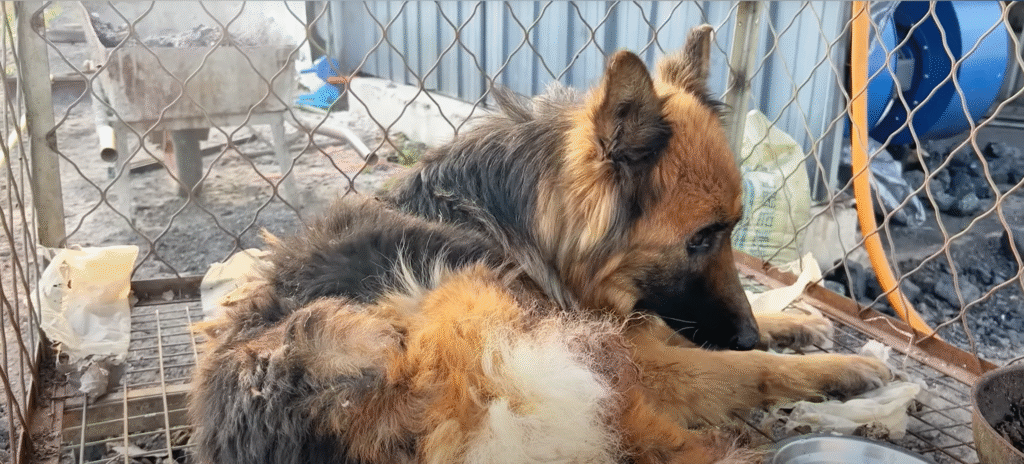
I approached slowly, letting him see and smell me from a distance. He didn’t bark or growl at first—he just glared, a low, guttural rumble vibrating in his chest. His body was tense, frozen in a defensive posture that seemed to say, I won’t trust you, no matter what you do. It was clear that kindness had been an alien concept to him for years. Every approach, every gesture, every touch from a human before had probably been pain, punishment, or neglect. And now, after almost a decade of this, he had learned to refuse it entirely.
I knelt at the edge of his pen and spoke softly, trying not to startle him. “Hey there, buddy. I’m not here to hurt you.” My voice, calm and measured, seemed almost foreign to him. He flinched at every sound, every movement. When I extended my hand, he recoiled violently, baring his teeth—not from aggression, but from fear. The muscles in his old body twitched with tension, ready to defend himself against a world that had given him nothing but pain.
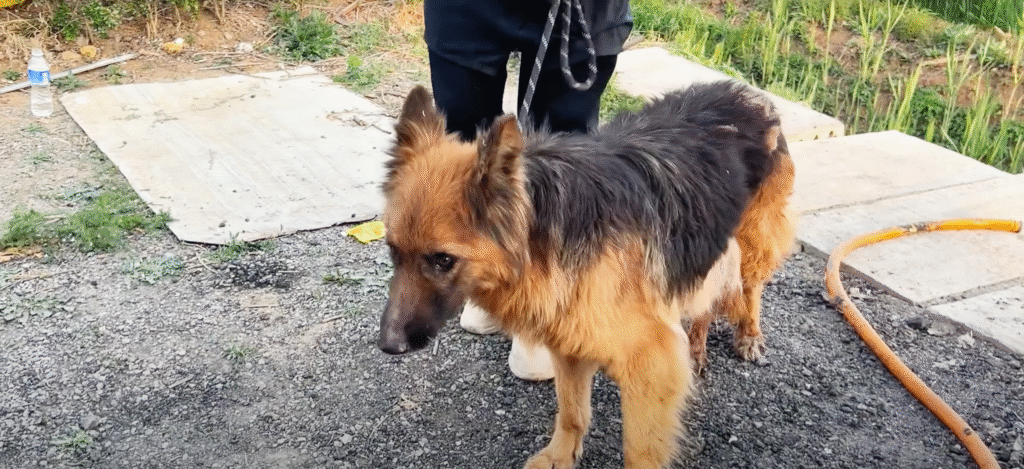
Feeding him was the first challenge. He had been so long confined and starved of proper care that even food was now associated with danger. I left a bowl of wet, nutritious food just within reach, and then backed away. He stared at it suspiciously, sniffed it with caution, and then, after what felt like an eternity, he took a tentative bite. Every crunch, every lick, seemed a careful negotiation with his instincts. Years of abuse had taught him that humans and food could both bring pain. Slowly, painfully, he realized this meal would not harm him.
His illness complicated everything. His body shook with weakness, and he had trouble moving around his small enclosure. Every step was labored, each movement a reminder that his confinement had stolen not just his trust, but his strength. I had to adjust my expectations; this dog, though alive, was fragile in more ways than one. Nine years of neglect had left him not just physically debilitated but emotionally scarred beyond what most could imagine.
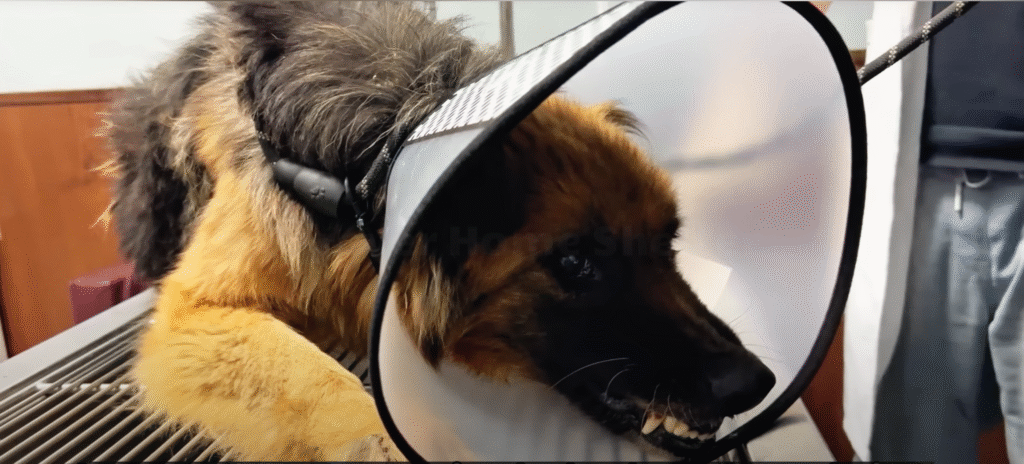
Medical attention was urgent. I contacted a veterinarian who specialized in senior and neglected dogs. The examination revealed several serious conditions: chronic arthritis, untreated infections, dental disease, and the beginnings of organ failure likely accelerated by malnutrition and stress. The vet shook her head softly. “This dog has suffered for far too long,” she said. “His body is failing, and his spirit has been broken.”
I watched him from a safe distance as the vet examined him. He growled and snapped whenever she tried to touch him, not out of cruelty, but out of fear—a deeply ingrained survival mechanism. Every sound of human movement, every new hand approaching, seemed to trigger the memory of years spent confined, ignored, or punished. Yet despite this, I noticed something small, almost imperceptible: after long moments of stillness, his eyes would flick toward the food, the water, the soft bedding we had prepared. A tiny spark of curiosity, a hint of hope.
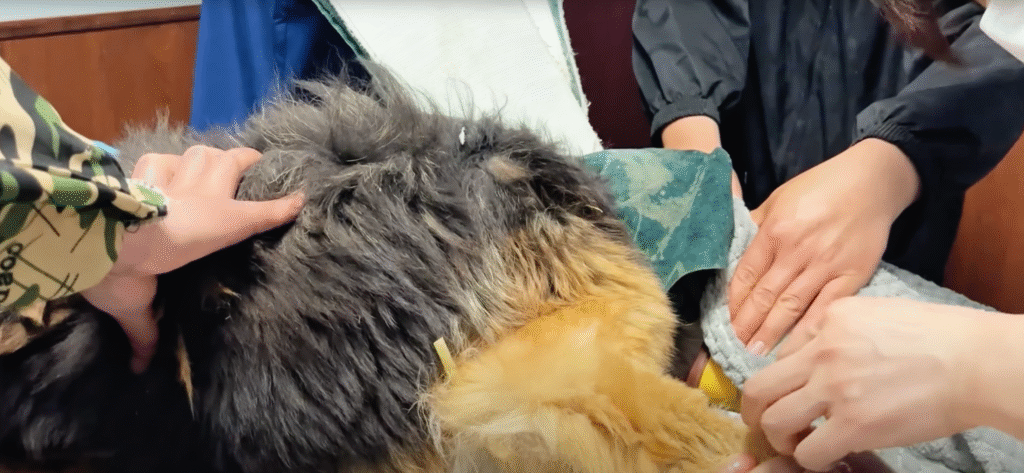
Recovery, I realized, would be slow. He had been denied love, care, and attention for nearly a decade, and now, even with all the resources available, it would take months—if not years—for him to relearn trust. Every day, I would sit with him in his pen, speaking softly, leaving food nearby, occasionally brushing gently when he allowed it. Some days, he tolerated my presence with a stiff, watchful silence; other days, he would retreat to a corner, growling or snapping if I got too close. Progress was measured in millimeters, not miles.
I began documenting his behavior carefully. Every moment of tolerance, every small sign of curiosity or relaxation, was a victory. The first time he lay down in my presence without growling, it felt monumental. The first time he approached the food without fear, tentative but deliberate, was a triumph. Slowly, I realized that he was beginning to distinguish between humans who caused harm and humans who could help.
Evenings were the hardest. When the sun set and shadows lengthened, his old memories seemed to resurface. He would pace in his small pen, whining softly, shaking as if reliving the confinement and abuse of years past. I would sit quietly beside him, letting him know through voice and presence that he was no longer alone. Every howl, every shiver, was a reminder that trauma leaves invisible scars, scars that don’t heal simply because the environment has changed.
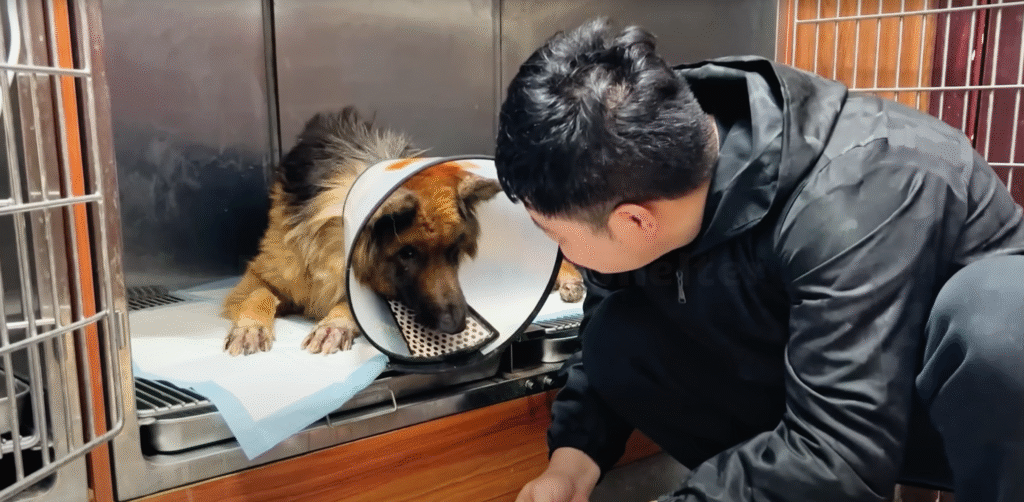
As the weeks passed, subtle changes became evident. His body strengthened slightly with regular meals, his breathing eased with veterinary care, and his coat began to regain some softness. Emotionally, he was beginning to accept the idea that humans could be a source of safety rather than harm. He would sometimes inch closer to my hand, sniffing, unsure but curious. Each touch had to be earned, and every retreat was met with patience.
The most important lesson I learned from this dog was about resilience. Despite nine years of neglect, despite the physical and emotional toll of confinement and illness, he was still alive—and somewhere deep inside, a fragment of his spirit remained unbroken. That tiny flicker of trust, so easily overlooked by an impatient or unkind observer, was a powerful reminder of the strength of life and the capacity for healing.
Eventually, we began thinking about his future beyond medical care. He would need a home that understood his history, a family patient enough to handle the scars of long-term abuse. But even imagining a future where he could be safe, loved, and cared for felt like a victory. For nine years, he had known only chains, illness, and neglect. Now, for the first time, he had hope.
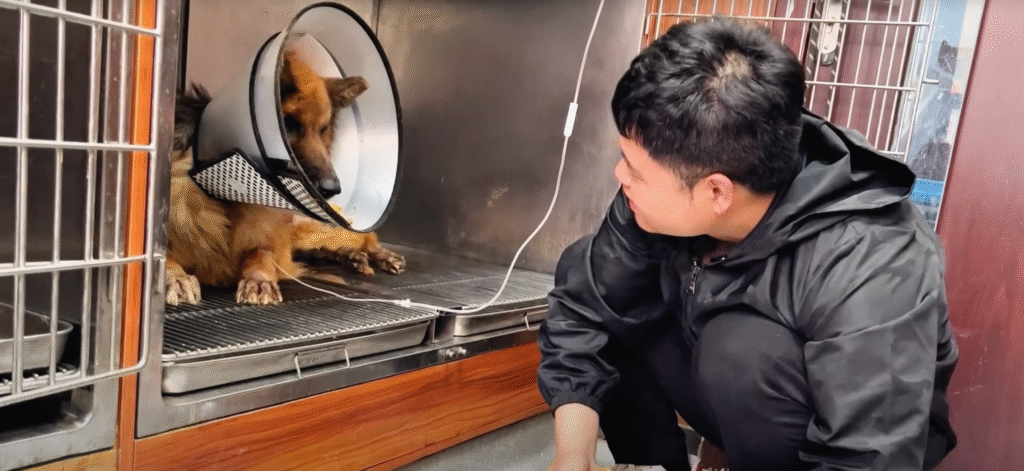
Watching him finally rest comfortably in his soft bed, I felt a mixture of sorrow and pride. Sorrow for the life he had lost, for the nine years of suffering that could never be recovered. Pride for the courage he had shown in simply surviving, for the tiny, hard-won steps toward trust and healing. This dog, confined and abused, was slowly learning to believe in kindness again—not out of obligation, but because he could.
Long-term abuse leaves marks that are not easily seen, but they are deeply felt. This dog’s story is a testament to that. He refused kindness at first because he had learned that it could hurt. But given patience, compassion, and consistent care, he began to rediscover what it meant to be loved, what it meant to be safe, and what it meant to trust again.
The road ahead would be long, but every step forward was a triumph over the injustice of his past. Nine years of confinement and illness had not entirely destroyed him; they had only made his eventual healing all the more remarkable. In his slow, cautious acceptance of love, there was hope—not just for him, but for all animals who have suffered at the hands of humans. And as I sat beside him, watching him finally close his eyes and rest without fear, I realized that kindness, patience, and compassion can mend even the deepest wounds—if given the time and opportunity.
